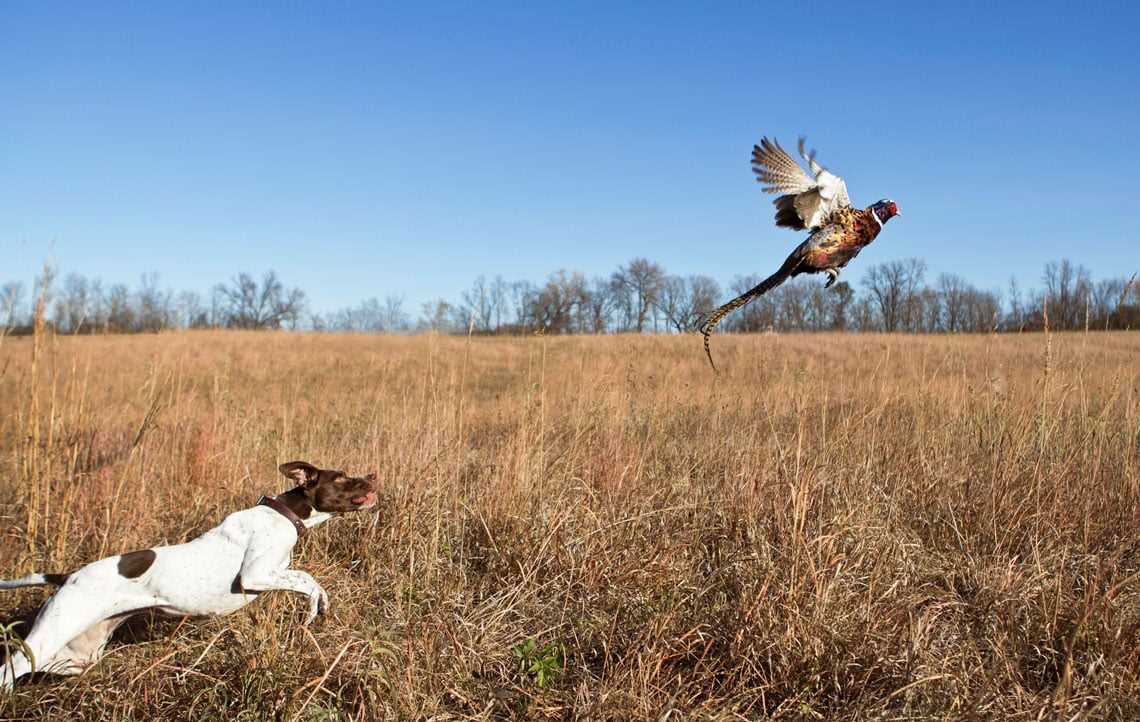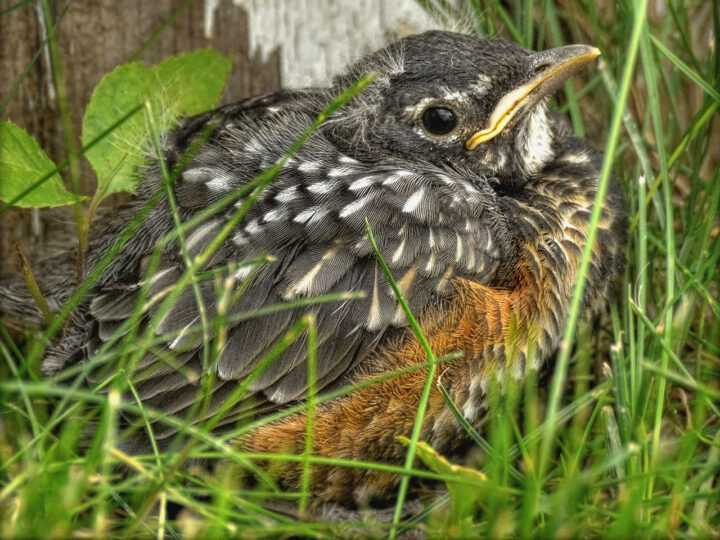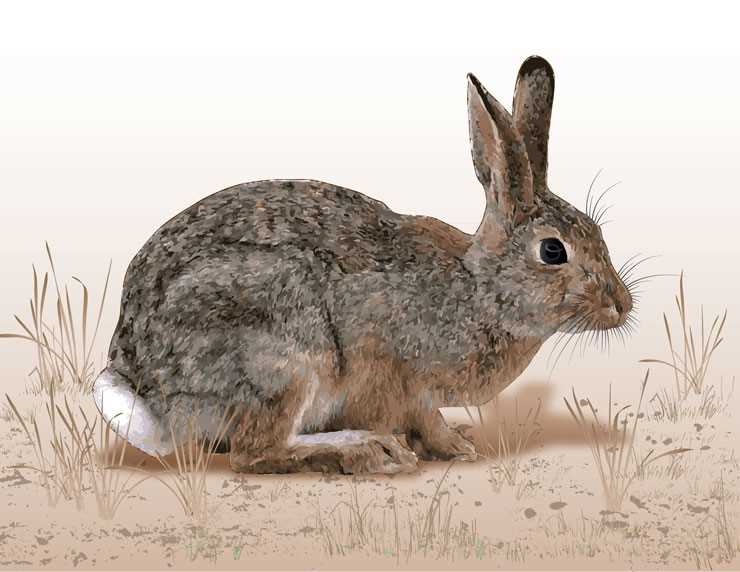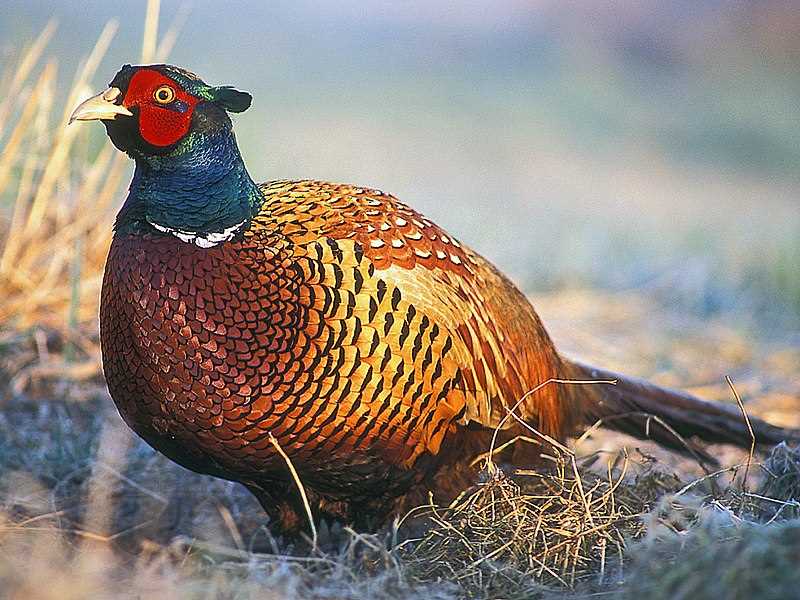Contents
Discovering the Fascinating World of Small Game Animals: Everything You Need to Know

If you have ever been hunting, you may have come across some small game animals. Small game animals are a diverse group of animals that are hunted for sport or food. They can be found in various habitats, from forests to fields, and can provide an exciting challenge for hunters. Some of the most popular small game animals include ducks, grouse, woodcocks, quails, partridges, hares, rabbits, and squirrels.
Ducks are aquatic birds that are sought after by hunters for their meat and beautiful plumage. They can be found in lakes, ponds, and rivers, and are known for their ability to fly long distances. Grouse, on the other hand, are ground-dwelling birds that are known for their distinctive drumming sound and quick flight. They are often found in forests and are particularly challenging to hunt due to their camouflage.
Woodcocks are small birds with long beaks that are specifically adapted for probing the ground. They are often found in marshy areas and are difficult to spot due to their cryptic coloring. Quails and partridges are small game birds that are known for their explosive takeoff and agile flight. They are found in grasslands and agricultural fields and are popular among hunters for their delicious meat.
Hares and rabbits are small mammals that are characterized by their large ears and hind legs. They are commonly found in open fields and are known for their fast running speed. Squirrels, on the other hand, are agile climbers that are found in forests and urban areas. They are known for their acrobatic movement and are particularly challenging to hunt due to their small size and ability to quickly evade hunters.
In conclusion, small game animals offer a diverse and exciting hunting experience. Whether you are hunting ducks, grouse, woodcocks, quails, partridges, hares, rabbits, or squirrels, each animal provides its own unique challenge. So, if you are interested in hunting or simply curious about these fascinating creatures, be sure to learn all about them here!
Small Game Animals: Understanding the Basics

Grouse: Grouse are medium-sized game birds that inhabit forests and grasslands. They have plump bodies and short tails, and are known for their elaborate courtship displays. Grouse hunting is a popular sport in many regions.
Partridges: Partridges are small to medium-sized birds that are typically found in agricultural areas and open grasslands. They have round bodies and short wings, and are quick runners. Partridge hunting is a common pastime for hunters.
Hares: Hares are swift and agile animals that are closely related to rabbits. They have long hind legs and big ears, and can reach high speeds in short bursts. Hare hunting is challenging due to their speed and unpredictable movements.
Pheasants: Pheasants are colorful and elegant birds that are often bred for hunting purposes. They have long tails, bright plumage, and are known for their impressive flying abilities. Pheasant hunting is a popular activity during the hunting season.
Quails: Quails are small game birds that are found in a variety of habitats, including grasslands, forests, and agricultural areas. They have plump bodies and short wings, and are known for their distinctive calls. Quail hunting is a favorite among hunters.
Rabbits: Rabbits are small mammals that are abundant in many regions. They have long ears and powerful hind legs, which enable them to hop quickly. Rabbit hunting is a common activity for hunters, and is often done with the help of hunting dogs.
Woodcocks: Woodcocks are migratory birds that inhabit wet woodlands and marshes. They have long bills and camouflage plumage, which allows them to blend in with their surroundings. Woodcock hunting is a specialized form of hunting that requires patience and skill.
Squirrels: Squirrels are small rodents that are found in forests and urban areas. They have bushy tails and strong hind legs, which enable them to climb trees and move quickly. Squirrel hunting is a popular activity for hunters, and is often done for both sport and food.
Exploring the World of Small Game Animals

Small game animals are a diverse group that includes partridges, pheasants, squirrels, ducks, rabbits, hares, grouse, and quails. These animals are hunted for sport and their meat, and they can be found in various parts of the world.
Partridges and pheasants are popular small game birds known for their beautiful plumage and delicious meat. They can be found in many countries, including the United States, the United Kingdom, and France. These birds are known for their fast flight and are a challenging target for hunters.
Squirrels are small, agile mammals that can be found in many forests around the world. They are known for their ability to climb trees and their love for nuts. Squirrels are not only hunted but also cherished as small pets by some people.
Ducks are waterfowl that are commonly hunted for sport and for their tasty meat. They can be found in both freshwater and saltwater habitats and are known for their ability to fly long distances. Ducks are a popular game animal during hunting seasons.
Rabbits and hares are small game animals that are found in many parts of the world. They are fast-moving and elusive, making them a challenging target for hunters. These animals are known for their ability to reproduce quickly and are a common sight in many rural areas.
Grouse is a small game bird that can be found in various habitats, including forests and grasslands. They are known for their camouflaged plumage and distinctive mating calls. Grouse hunting is a popular sport in many countries, and their meat is considered a delicacy.
Quails are small game birds that are known for their quick and agile flight. They can be found in many parts of the world, including Asia, Europe, and North America. Quail hunting is a popular activity, and their meat is highly prized for its delicious taste.
Exploring the world of small game animals offers a unique opportunity to appreciate the diversity of nature and to engage in outdoor activities such as hunting. Whether you are a hunter or simply interested in learning more about these fascinating creatures, small game animals have much to offer in terms of their behavior, habitat, and ecological role.
What Qualifies as a Small Game Animal?

In the realm of hunting, small game animals refer to certain species that are typically smaller in size and hunted for their meat, fur, or sport. These animals are not only abundant in numbers but also provide a thrilling hunting experience. Some of the most common small game animals include:
| Rabbits | Woodcocks |
| Squirrels | Pheasants |
| Partridges | Ducks |
| Quails | Grouse |
Rabbits are prevalent and can be found in various habitats. Woodcocks are migratory game birds known for their distinctive long bills. Squirrels are agile climbers and can be found in both urban and forest areas. Pheasants are prized game birds with vibrant plumage. Partridges, similar to pheasants, are often flushed out during hunts. Ducks are waterfowl that inhabit wetlands and provide a challenging target. Quails are small birds that are commonly found in open fields or grasslands. Grouse are game birds known for their elaborate mating rituals.
These small game animals offer hunters diverse opportunities for pursuit, and each species has its own unique characteristics and hunting seasons. Whether it's the thrill of the chase, the sport of shooting, or the enjoyment of a delicious wild game meal, small game hunting provides an exciting and rewarding experience for hunters of all levels.
Why are Small Game Animals Popular for Hunting?
Small game animals, such as squirrels, hares, partridges, grouse, quails, woodcocks, pheasants, and rabbits, are popular targets for hunting for several reasons.
First, small game animals are abundant and widely distributed, making them easily accessible for hunters. They can be found in various habitats, including forests, fields, and wetlands, providing diversity in hunting opportunities.
Second, hunting small game animals requires less equipment and resources compared to hunting larger game. Hunters can use lightweight firearms or even bows and arrows, which are more affordable and easier to carry. This makes small game hunting accessible to a wider range of people, including beginners and those with limited physical strength.
Additionally, small game hunting often involves more action and fast-paced pursuits. Small game animals are known for their agility and evasiveness, making the hunt challenging and exciting. The thrill of tracking and outsmarting these animals adds to the appeal of hunting small game.
Small game animals also provide a source of sustenance for hunters. The meat from these animals is lean and flavorful, and can be used in various recipes. Many hunters enjoy the satisfaction of providing food for themselves and their families through their hunting efforts.
Furthermore, hunting small game animals contributes to wildlife management and conservation efforts. By controlling the population of these animals, hunters help maintain a balance in ecosystems and prevent overpopulation. This benefits not only the game animals themselves, but also other species that depend on them for food and habitat.
In conclusion, small game animals are popular for hunting due to their abundance, accessibility, affordability, thrill of the hunt, potential for sustenance, and contribution to wildlife management. Whether it's for sport, food, or conservation, small game hunting offers a rewarding experience for hunters of all levels.
Types of Small Game Animals

When it comes to small game animals, there are several species that hunters commonly pursue. These animals include squirrels, woodcocks, ducks, partridges, quails, grouse, rabbits, and pheasants.
Squirrels are agile climbers and can be found in forests and woodlands. They are known for their ability to leap from tree to tree and their fondness for nuts. Woodcocks are small birds that inhabit moist woodlands and are often hunted for their delicious meat.
Ducks can be found in various aquatic habitats and are popular targets for waterfowl hunters. They are known for their webbed feet and waterproof feathers. Partridges are ground-dwelling birds that are commonly found in grasslands and agricultural areas. They are known for their distinctive calls and rapid flight.
Quails are small birds that can be found in fields and brushy areas. They are known for their quick movements and excellent camouflage. Grouse are medium-sized birds that inhabit forests and are known for their distinctive drumming sounds.
Rabbits are small mammals that are found in a variety of habitats, including fields, meadows, and forests. They are known for their rapid reproduction rates and agility. Pheasants are colorful birds that are commonly found in grasslands and agricultural fields. They are popular targets for upland bird hunters.
Each of these small game animals presents its own unique set of challenges and rewards for hunters. Whether you prefer the excitement of chasing squirrels through the treetops or the thrill of flushing out a covey of quails, there is a small game animal for every type of hunter.
| Animal | Habitat | Notable Facts |
|---|---|---|
| Squirrels | Forests and woodlands | Agile climbers, fondness for nuts |
| Woodcocks | Moist woodlands | Delicious meat |
| Ducks | Aquatic habitats | Webbed feet, waterproof feathers |
| Partridges | Grasslands and agricultural areas | Distinctive calls, rapid flight |
| Quails | Fields and brushy areas | Quick movements, excellent camouflage |
| Grouse | Forests | Distinctive drumming sounds |
| Rabbits | Fields, meadows, forests | Rapid reproduction rates, agility |
| Pheasants | Grasslands and agricultural fields | Colorful, popular targets for upland bird hunters |
Squirrels: The Darting Acrobats of the Forest

Squirrels are small game animals that are known for their incredible agility and acrobatic movements. They belong to the family Sciuridae, which also includes chipmunks and marmots. Squirrels are found all over the world, except in Antarctica and Australia.
There are many species of squirrels, including the gray squirrel, red squirrel, fox squirrel, and flying squirrel. These small mammals have distinctive features such as long bushy tails, sharp claws, and sharp front teeth. They are known for their ability to climb trees and run quickly on the ground.
Squirrels are primarily herbivores, although some species have been known to eat insects, eggs, and small birds. Their diet consists of nuts, seeds, fruits, berries, and buds. Squirrels are often seen burying their food in the ground for later use.
One fascinating behavior of squirrels is their ability to leap from tree to tree. They use their long tails for balance and as a rudder while airborne. This allows them to navigate through the forest canopy with ease. Squirrels are also known for their ability to dart back and forth quickly, making them difficult to catch.
In addition to their acrobatic abilities, squirrels are highly intelligent animals. They have excellent memory and are able to remember the location of their food caches. Squirrels are also known for their problem-solving skills and can adapt to different environments.
Squirrels play an important role in forest ecosystems. They help in seed dispersal by burying and forgetting about their food caches, which allows for the growth of new plants. They also serve as a source of food for predators such as pheasants, quails, partridges, grouse, woodcocks, rabbits, and ducks.
In conclusion, squirrels are fascinating creatures that are known for their agility, acrobatic movements, and intelligence. They are an integral part of forest ecosystems and contribute to seed dispersal and the food chain. So, next time you see a squirrel darting around in the forest, take a moment to appreciate its impressive abilities.
Rabbits: The Wily and Quick-Footed Prey

Rabbits are one of the most common small game animals hunted by both amateurs and professionals alike. Known for their quick feet and wily nature, rabbits are a popular target for those looking for a challenge in the hunting world.
While not as large as some other small game animals like hares, quails, partridges, woodcocks, pheasants, ducks, and grouse, rabbits make up for their size with their speed and agility. Their long hind legs allow them to make quick sprints and sharp turns, making it difficult for hunters to keep up.
Rabbits are also known for their ability to blend in with their surroundings. They have a keen sense of hearing and are always on the lookout for potential predators. This makes them a difficult target for hunters, as they can quickly disappear into the underbrush or burrows.
Hunting rabbits requires patience, skill, and stealth. Many hunters use dogs to help track and flush out rabbits, as they can be difficult to spot in dense vegetation. Once flushed, rabbits will often run in a zigzag pattern to throw off their pursuers.
| Common Small Game Animals |
|---|
| Rabbits |
| Hares |
| Quails |
| Partridges |
| Woodcocks |
| Pheasants |
| Ducks |
| Grouse |
In conclusion, rabbits are a challenging and elusive prey for hunters. Their speed, agility, and ability to blend in make them a worthy opponent in the small game hunting world. Whether hunting for sport or for food, pursuing rabbits is sure to provide an exciting and rewarding experience.
Pheasants: The Colorful Gems of Hunting

Pheasants are one of the most spectacular game birds that hunters can pursue. With their vibrant feathers and majestic appearance, they are often referred to as the colorful gems of hunting. Pheasants belong to the family Phasianidae, and they are known for their impressive flying abilities and elusiveness.
Compared to other small game animals such as squirrels, hares, quails, grouse, ducks, rabbits, and woodcocks, pheasants stand out due to their unique beauty. The males, called roosters, are especially vibrant, with their iridescent plumage and long, flowing tail feathers. Meanwhile, the females, known as hens, exhibit more modest colors that enable them to blend into their surroundings and protect their chicks.
When hunting pheasants, it's important to understand their behavior and habitat. Pheasants prefer a mixture of open fields, grasslands, and wooded areas. They are often found near agricultural fields and feed on grains, seeds, insects, and even small animals.
Pheasant hunting is a popular sport that requires patience, skill, and good aim. Hunters can pursue them with shotguns and various hunting dogs, such as pointers and retrievers, which are trained to locate and retrieve downed birds. And because pheasants are fast fliers, hunters need to be quick and accurate in their shots.
In addition to being a challenging game bird to hunt, pheasants also offer a delicious meat for culinary enthusiasts. Their lean and flavorful meat can be used in a variety of recipes, making them a prized species for hunters and chefs alike.
So, if you're looking for an exciting hunting experience and a beautiful bird to add to your game bag, give pheasants a try. They will not only test your hunting skills but also provide a stunning reward for your efforts.
Methods and Tips for Small Game Hunting

Hunting small game animals such as hares, quails, woodcocks, grouse, squirrels, pheasants, ducks, and partridges is an exciting and rewarding activity. Whether you are a beginner or an experienced hunter, here are some methods and tips to help improve your small game hunting skills:
1. Scout the area: Before heading out for a hunting trip, it is important to scout the hunting area. Look for signs of small game animals such as tracks, droppings, feathers, or nests. This will give you an idea of where the animals frequent, helping you to plan your hunting strategy.
2. Camouflage: Small game animals have keen eyesight and are easily spooked. Wearing camouflage clothing and using blinds or natural cover can help you blend into the surroundings and increase your chances of getting close to your target without being detected.
3. Use the right firearm: When it comes to hunting small game, using the right firearm is crucial. Shotguns are generally the preferred choice as they have a wide range and are effective for shooting fast-moving targets like birds. Rifles can also be used for smaller game animals like squirrels.
4. Practice accuracy: Small game hunting requires precision and accuracy. Take the time to practice shooting at targets from different distances and positions. This will help improve your aim and increase your chances of making a clean kill.
5. Hunt during the right time: Small game animals are most active during early morning and late afternoon. Plan your hunts accordingly to maximize your chances of spotting and successfully hunting your target species.
6. Use decoys and calls: Decoys and calls can be effective tools for attracting small game animals. For example, using a duck call can mimic the sounds of other ducks, luring them closer to your hunting location. Similarly, using a decoy can make it appear as if there is already a small game animal present, increasing the likelihood of attracting others.
7. Follow hunting regulations: It is important to familiarize yourself with the local hunting regulations and adhere to them. This includes obtaining the necessary permits, hunting within the designated seasons, and following bag limits. Respecting wildlife conservation laws ensures the sustainability of small game populations for future hunting seasons.
By following these methods and tips, you can enhance your small game hunting skills and increase your chances of a successful hunt. Remember to always prioritize safety and ethical hunting practices throughout your hunting adventures.
Scouting Techniques for Small Game

Scouting for small game, such as ducks, squirrels, pheasants, woodcocks, partridges, grouse, quails, and rabbits, requires careful observation and knowledge of their habitats and behaviors. By employing effective scouting techniques, hunters can increase their chances of a successful hunt.
1. Know the Habitat: Each small game animal has its preferred habitat. Ducks can be found in wetlands and marshes, while squirrels are often found in wooded areas. Pheasants prefer grasslands, and woodcocks are often found in damp, swampy areas. Partridges, grouse, and quails can be found in open fields or brushy areas. Rabbits are commonly found in thickets and overgrown fields.
2. Tracks and Sign: Learning to identify tracks and other signs left by small game is essential for successful scouting. Look for footprints, droppings, feathers, nests, burrows, and other indicators of their presence. Pay attention to fresh sign to determine the recent whereabouts of the animals.
3. Food and Water Sources: Understanding the food preferences of small game is crucial for scouting. Ducks, for example, feed on aquatic plants and insects, while squirrels often feed on nuts and seeds. Pheasants graze on grasses and insects, and woodcocks probe the soil for worms and insects. Partridges, grouse, and quails feed on plants, seeds, and insects. Rabbits graze on grasses, vegetables, and bark.
4. Observe Behavior: Spend time quietly observing the behavior of small game animals. Learn their patterns, such as when they are most active, where they feed, and where they take cover. This knowledge will help in planning hunting strategies and determining the best locations for setting up blinds or stands.
5. Use Scouting Tools: Binoculars and trail cameras can be valuable scouting tools. Binoculars allow you to observe small game animals from a distance without disturbing them. Trail cameras can be set up in key locations to capture photos or videos of animals passing by, providing valuable information about their movements and habits.
By combining these scouting techniques and knowledge of small game animals, hunters can increase their chances of a successful hunt.
Choosing the Right Weapon and Ammunition

When it comes to hunting small game animals such as pheasants, squirrels, hares, grouse, quails, partridges, woodcocks, and ducks, it is essential to choose the right weapon and ammunition. The right combination will help you achieve a clean, ethical, and successful hunt.
When selecting a weapon, consider the type of game you will be hunting and your personal preference. Shotguns are a popular choice for small game hunting as they have a wide pattern of pellets, making it easier to hit fast-moving targets. They are also versatile and can be used for different types of game.
The gauge of the shotgun will depend on the size of the game you are hunting. For smaller game like quails and woodcocks, a 20-gauge shotgun is usually sufficient. However, for larger birds such as pheasants and ducks, a 12-gauge shotgun is recommended.
Another factor to consider is the choke of the shotgun. Different chokes affect the spread of the pellets, so you can choose one based on your hunting style and the type of game you are pursuing. A tighter choke is suitable for longer shots, while a more open choke is better for close-range targets.
When it comes to ammunition, there are various options available. For small game hunting, it is commonly recommended to use shotshells with small shot sizes. For example, for birds like quails and partridges, small shot sizes like #7.5 or #8 are adequate. For larger game like pheasants and ducks, shot sizes like #4 or #6 are recommended.
It is crucial to use the right ammunition for the game you are targeting to ensure a clean kill and prevent unnecessary suffering. Using the wrong ammunition can result in wounded animals and lost opportunities.
Before heading out for your hunting trip, make sure to familiarize yourself with the regulations and restrictions for the specific area you will be hunting in. Some areas may have specific rules regarding the type of weapon or ammunition allowed.
- Choose a shotgun based on the type of game and personal preference.
- Consider the gauge and choke of the shotgun for optimal performance.
- Use shotshells with appropriate shot sizes for the game you are hunting.
- Follow the regulations and restrictions for the hunting area.
Effective Hunting Strategies for Small Game
Small game hunting can be an exhilarating and rewarding experience. Whether you are targeting pheasants, woodcocks, hares, grouse, ducks, partridges, rabbits, or squirrels, here are some effective hunting strategies to maximize your success:
- Choose the right location: Research and identify areas where your target small game animals are likely to be found. Look for habitats that offer food sources, water, cover, and suitable nesting or denning sites.
- Blend into the environment: Wear camouflage clothing that matches the surrounding vegetation to conceal yourself from the keen eyesight of small game animals. Use natural cover to your advantage and move slowly and quietly.
- Use decoys and calls: Depending on the species you are hunting, consider using decoys and calling techniques to lure the animals closer. For example, if hunting ducks, set up a realistic decoy spread and utilize duck calls to attract them.
- Practice stealth and patience: Approach your hunting area cautiously, minimizing noise and movement. Take your time and stay alert for any signs of small game activity. Small game animals are often skittish and can quickly disappear if alarmed.
- Use proper ammunition: Choose the appropriate caliber and load for the type of small game you are targeting. Different species may require different ammunition to ensure a clean, ethical, and humane shot.
- Employ effective shooting techniques: Practice your shooting skills regularly to improve accuracy and precision. Small game animals can be fast-moving targets, so quick reflexes and a steady hand are essential.
- Utilize dogs for tracking: If hunting small game like woodcocks or rabbits, consider using well-trained hunting dogs to help track, flush, or retrieve the animals. A good hunting dog can significantly enhance your hunting success.
- Respect regulations and seasons: Always adhere to local hunting regulations, including bag limits, hunting seasons, and legal hunting methods. Conservation and responsible hunting practices ensure the sustainability of small game populations.
Remember, small game hunting requires knowledge, skill, and patience. By following these effective hunting strategies, you can increase your chances of a successful and enjoyable hunting experience.

A skilled hunter, dedicated conservationist, and advocate for ethical practices. Respected in the hunting community, he balances human activity with environmental preservation.
